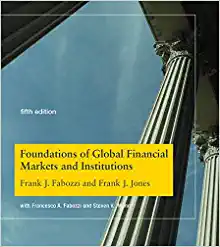Question
Innovation, education, transport: are decision-makers listening? Here Radio-Canada.ca | Economy Blog Tuesday, January 26, 2016 at 12:37 p.m. | Gerald Fillion Are our political leaders
Innovation, education, transport: are decision-makers listening? Here Radio-Canada.ca | Economy Blog Tuesday, January 26, 2016 at 12:37 p.m. | Gerald Fillion Are our political leaders listening? A number of researchers, professors, entrepreneurs, economic actors make proposals every day, challenge us on the economy of tomorrow and ask us to make choices to improve our economy in the medium and long term. Of course, you can stimulate the economy in the short term with a renovation tax credit or an investment in infrastructure. But how do we meet the demographic, ecological and structural challenges of our economy in the long term? Will we still be stuck at 1 or 2% GDP growth in 2020, in 2025, in 2030 because the choices that must be made today will not have been made? I just want to give you [two] examples generated on Monday alone in all of our news. [Two] examples of solutions that require vision, ambition and that require our decision-makers to put aside the short-term electoral and partisan vision. [Two] examples of an economy to be developed to create wealth, jobs and sustainable growth: an innovation strategy [and] massive investment in education...
1. At RDI economy on Monday evening, the new president of the Association francophone pour le savoir (ACFAS), Frdric Bouchard, called for an innovation strategy in Quebec. The current government has set aside the strategy deployed in 2013 by the Marois government. And the innovation and research sectors have been separated, even though they had been together for 10 years. However, the future depends on closer links between university research and business innovation, according to Frdric Bouchard. And it is necessary to press the accelerator, according to him, because our challenges are colossal: aging of the population, climate change, dematerialization of the economy, etc. 2. In a study published on Monday, the Center for Productivity and Prosperity (CPP) states that Quebec does not invest enough in education. "The proportion of young Quebecers aged 15 to 19 who evolve on the margins of the education system is greater than in the majority of countries and the university graduation rate is also lower there," writes the CPP. It is obvious, it is clear, it is factual. How can a society hope to get rich without a substantial investment in education, in training, in its young people? The Minister of Finance has promised a "reinvestment" in education in the next budget. But, in reality, the growth in spending on education will not even exceed the level of inflation.
... Too simple, you will say. I will answer you: too complicated in fact for political decision-makers subscribed to the short term... As Frdric Bouchard explained on Monday evening, innovating means transforming knowledge into a useful and wealth-creating tool... We need a strategy, he told us, to support Serge Godin and Alexandre Taillefer of tomorrow. Ideas must have wings. But where are we on this front? Far. Far from the best. An American study told us on Monday that Canada ranks 25th out of 56 developed countries in the world in terms of innovation and their effect on global growth. Far from the first, Finland, Sweden, the United Kingdom, far from the United States and France, in 10th and 11th place. In Davos, Prime Minister Justin Trudeau said we need to invest in knowledge in Canada, not just in resources. This statement raises some hope among researchers and innovators. But everything remains to be done. In fact, at the moment, we are talking about infrastructure without knowing what the money will be invested in and to what extent it will stimulate innovation... Ideas, creativity, there are. What is needed is vision.
1) Grald Fillion writes that "we can stimulate the economy in the short term with a renovation tax credit or an investment in infrastructure. But how do we meet the demographic, ecological and structural challenges of our economy in the long term? Based on the economic growth model seen in class, clearly explain the link between implementing a renovation tax credit and increased economic growth?
3) If we consider the marginal returns to capital and the steady state, explain why it is necessary to differentiate the short term from the long term in terms of economic growth for Quebec or any developed country?
4) Grald Fillion offers "[two] examples of an economy to be developed to create wealth, jobs and sustainable growth: an innovation strategy [and] massive investment in education..." According to the model of economic growth seen in the course, how does the impact of innovation (technological knowledge) and education on economic growth differ from that of investments in physical capital?
5) Grald Fillion indicates that "in reality, the growth in education spending will not even exceed the level of inflation" Using the distinction between real and nominal variables, explain why is it a problem that the growth in education spending is lower than the level of inflation?
6) Indicate what type of capital education spending affects.
Step by Step Solution
There are 3 Steps involved in it
Step: 1

Get Instant Access to Expert-Tailored Solutions
See step-by-step solutions with expert insights and AI powered tools for academic success
Step: 2

Step: 3

Ace Your Homework with AI
Get the answers you need in no time with our AI-driven, step-by-step assistance
Get Started


